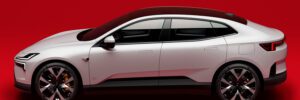
The 2026 Polestar 4 is an unusual vehicle, even for an EV from Sino-Swedish startup brand Polestar. Its makers call it an “electric performance SUV coupe”, though it has four doors. It’s smaller than the Polestar 3 SUV, though larger than the Polestar 2 compact crossover—meaning the Polestar lineup, from small to large and cheapest to priciest, runs from 2 to 4 to 3. Its most notable feature may be its lack of a rear window; the trunk lid ends at the visual base of the roof.
We worry all this makes it a confusing model that may be a challenge to sell: It’s an unusual body style, from a largely unknown brand, that’s missing a large and obvious component shoppers expect in every new vehicle.
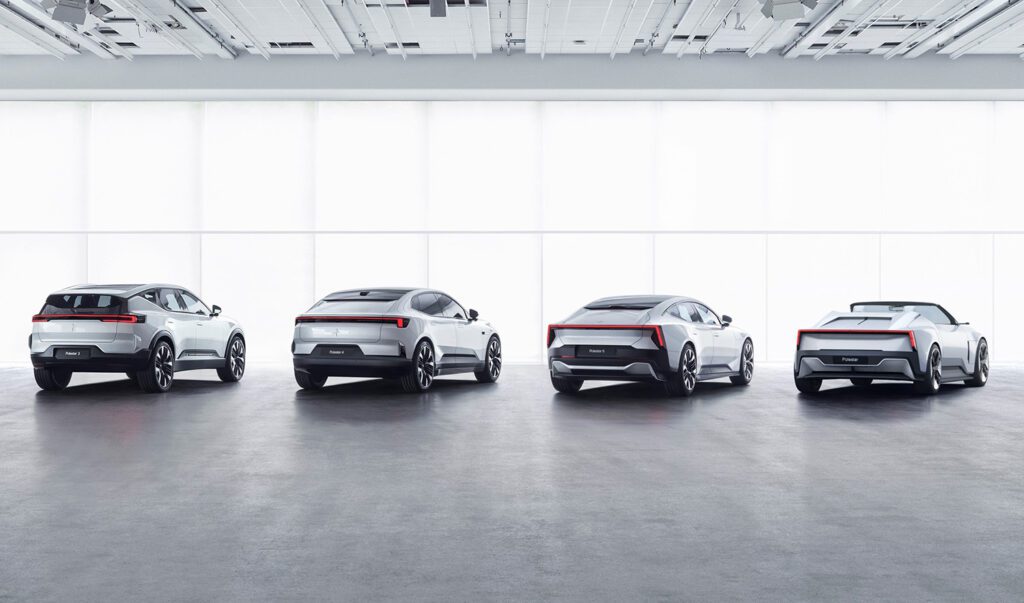
The Polestar 4 has been on sale since August as a 2026 model; first deliveries are expected before the end of the year. US and Canadian cars are made in Busan, South Korea, the second assembly plant to assemble the P4 after Hangzhou Bay, China. Battery cells for those Busan models still come from CATL in China, however. Note the pre-production 2025 models we drove in Montreal in July differed slightly from US-market 2026 Polestar 4s.
The Long Range Single Motor model is EPA-rated at up to 310 miles of range, starting at $57,600, while the pricier but faster Dual Motor version takes a slight hit down to 280 miles. For those customers keeping track, the company notes the 4 has the lowest lifetime carbon footprint of any Polestar to date.
A design difference no customer asked for?
Let’s deal with the lack of a rear window right up front. Why did Polestar do it, aside from echoing a concept car from back in 2020? Executives spoke at some length about how eliminating a glass rear window permitted a sleeker, more sloped fastback tail and a lower roofline, while still providing the necessary rear headroom. We’re not convinced.

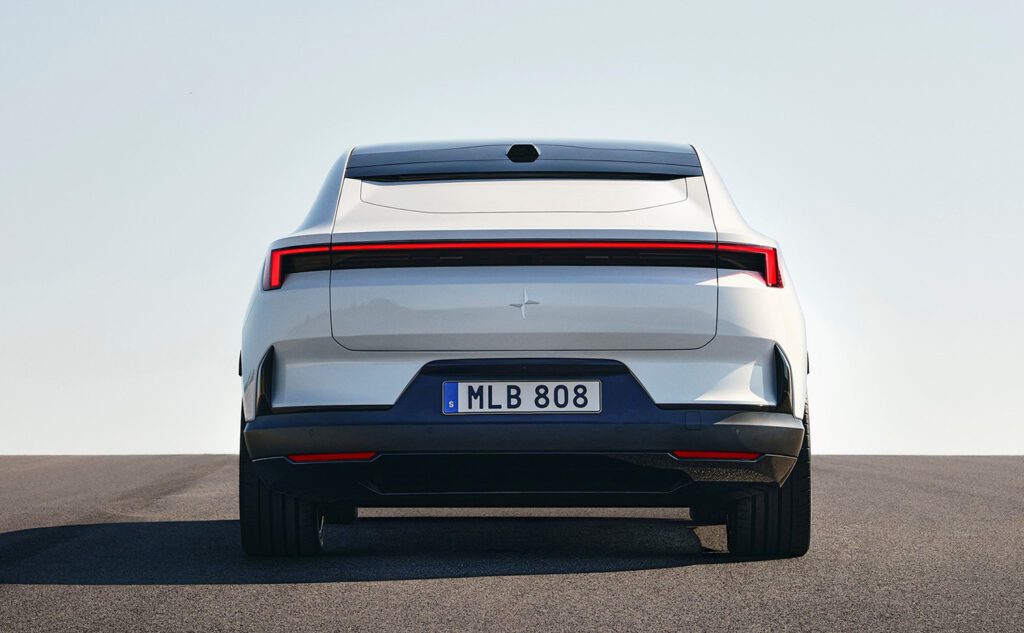
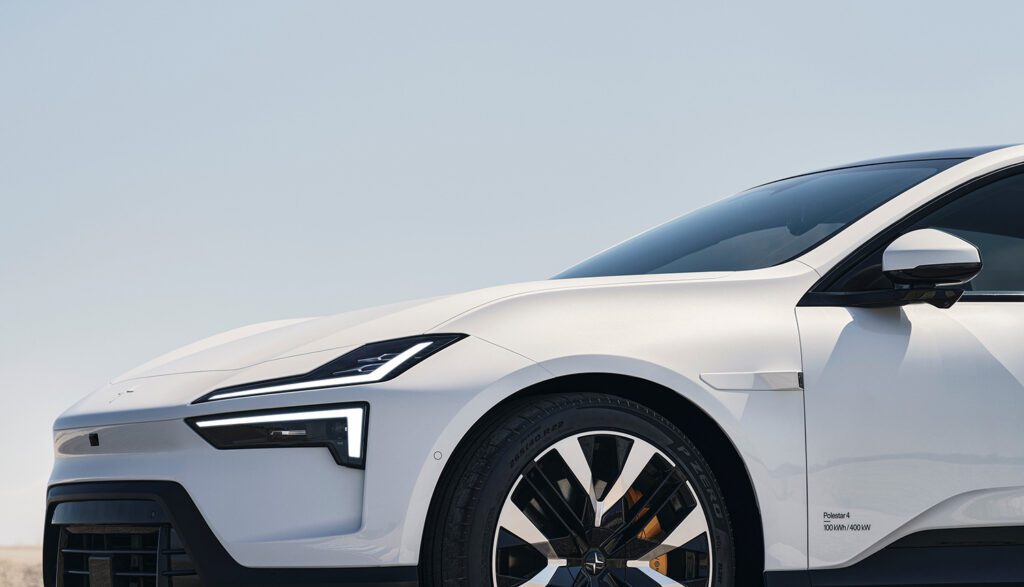
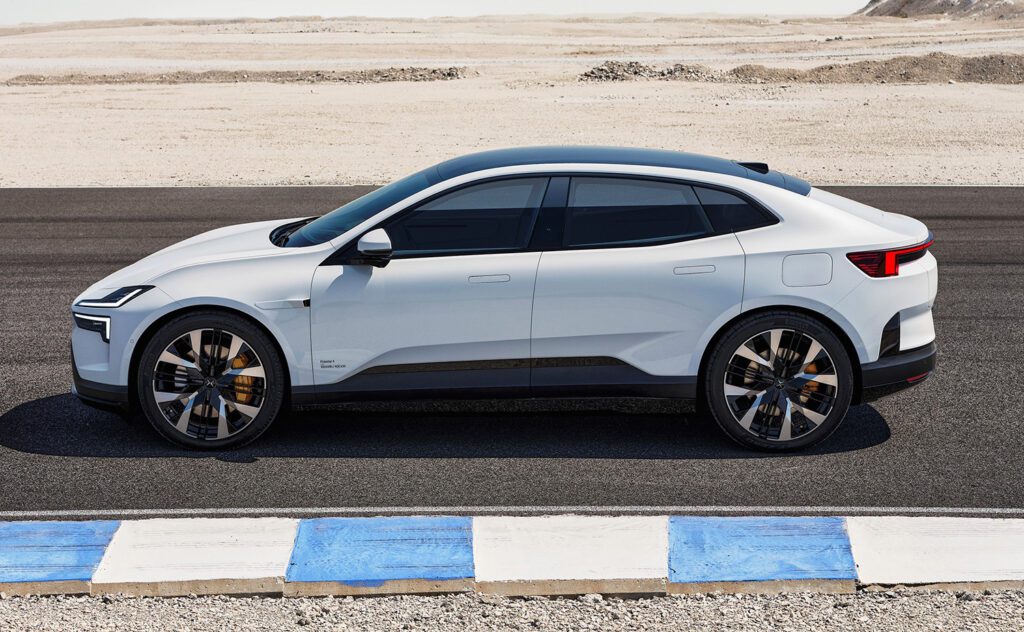
The lack is far more noticeable in light colors, less so in darker ones. The glass roof has been visually extended to the top of the trunk lid with shiny black plastic panels. Still, we couldn’t help but notice an indent in the tall trunk lid that might provide a cut-out for at least a vestigial rear glass—if customers bridle at its lack. Alternatively, perhaps this reporter simply isn’t the right audience for the car.
The woven interior fabrics, known as Tailored Knit upholstery, are made entirely from recycled PET, with the fabric knitted to size. The part of the dash facing the occupants, covered in this woven fabric, is elegant—but the effect is spoiled by a black nylon mesh further up toward the windscreen, which both of us agreed looked and felt cheap. We appreciated the distinctive pop of colour in the seat belts, either an orange stripe on black or solid orange.
Fast but firm … to harsh
Polestar notes the 4 is its fastest model to date, with the highest-performance mode of its Dual Motor version taking just 3.7 seconds to accelerate from 0 to 60 mph. That model is quoted at 405 kilowatts (544 horsepower) and 506 foot-pounds of torque. The rear-wheel-drive Single Motor variant is quoted at 200 kW (272 hp) and 253 lb-ft of torque, with 0-6o-60-mph acceleration of 6.9 seconds—almost double that of the hot-rod version. Both are powered by a 100-kilowatt-hour battery pack (94 kWh usable) with cells from China’s Contemporary Amperex Technology Co. Limited (CATL). Fast charging speed is quoted at up to 200 kilowatts.
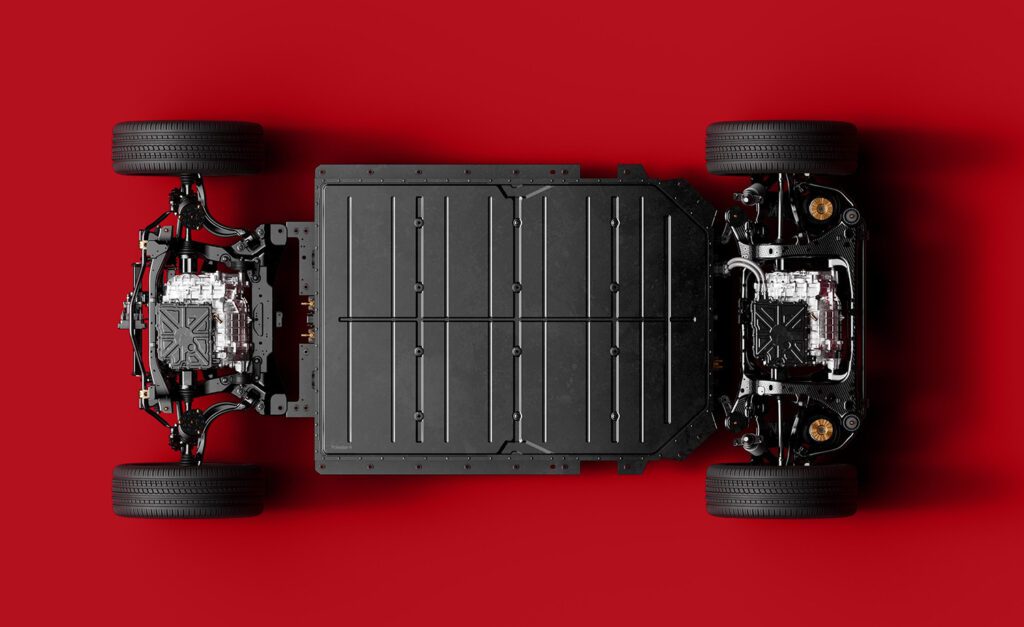
Behind the wheel, acceleration is clearly there when called for. I might have liked a bit more steering feel, though the car goes where it’s pointed just fine. Among the available performance options are active dampers (shock absorbers) and 4-piston Brembo brakes.
The handling and roadholding are on the heavy side, and in corners you can feel the tires working to hold this 5,200-pound vehicle in place. Even on the Normal suspension setting, the ride is notably firm; we managed to hit the bump stops, quite unintentionally, while going through one pothole. The sportier settings head into rougher-ride territory.
Polestar’s implementation of one-pedal driving does not slow the car entirely. Below about 5 mph, the driver must brake to a stop. Its regenerative braking, even on the strongest setting, is on the gentle side compared to other EVs, though easy to learn and plan for.
Then there’s the challenge of the video rear-view mirror (since a regular glass mirror has no view through a rear window to reflect). The windshield is so steeply raked that the mirror is surprisingly close to the driver’s eyes, making it a challenge to switch focal distance from a few hundred feet ahead to perhaps 18 inches, then back again.
Plus, the image squirms in the corner of the driver’s eyes, and it moves sideways when a turn is signaled. My driving partner said his eyes felt tired from the continual refocusing, and even a Polestar exec admitted it had taken him three days to acclimatize to that aspect of the car. To its credit, Polestar uses very good rear-view cameras, and the backup image was superb.
Quiet, well-bolstered, screen-centric
The low “coupe” roofline combined with the underfloor battery pack means all occupants, including those in front, sit in a slightly knees-up posture. This is hardly unique to the P4, but it remained noticeable even after moving the driver’s seat as high as it would go—more so than in the P2 or P3 with their more upright SUV proportions. Seats were comfortable and well bolstered, as buyers expect in a performance-oriented EV.
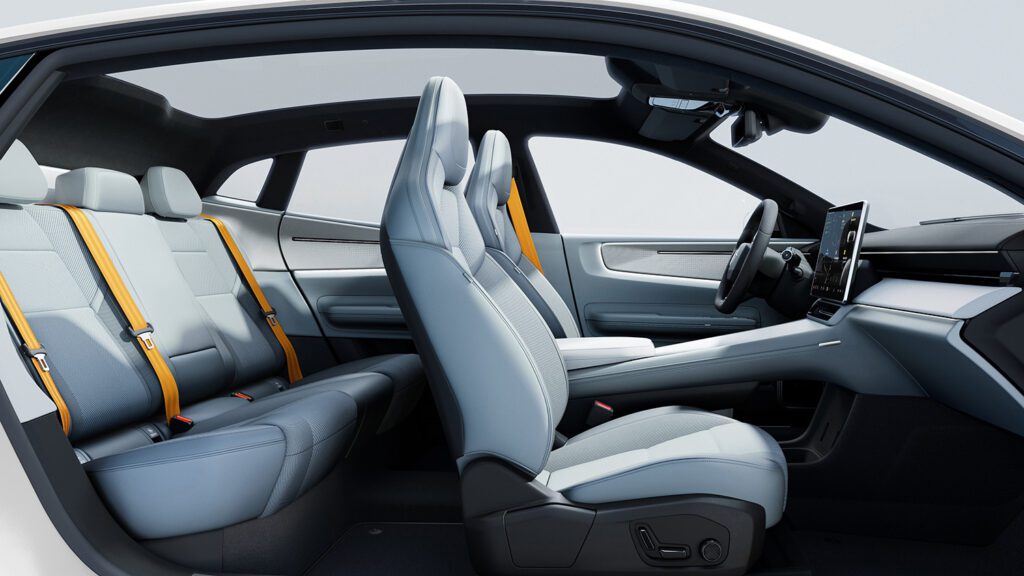
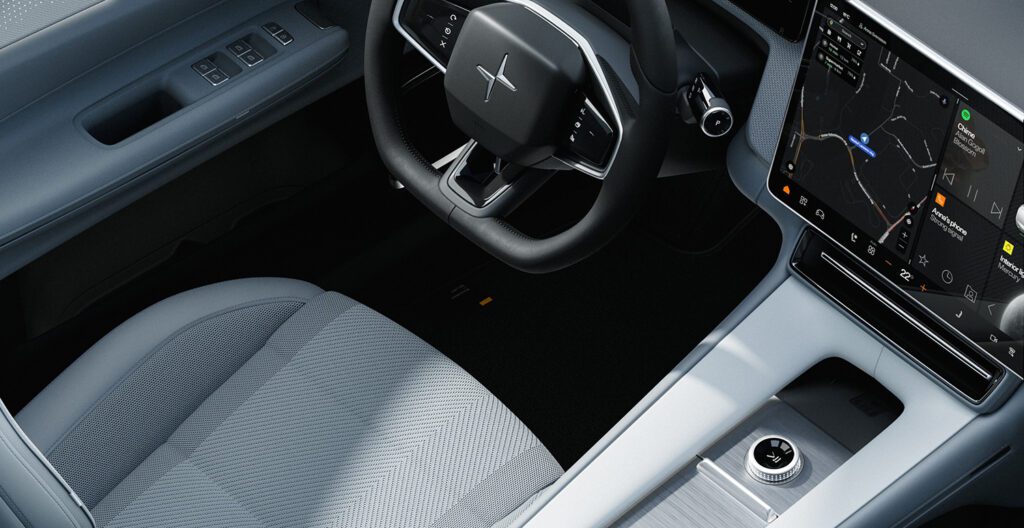

We heard no noise at all from the motor or power electronics, and very little wind noise. The bulk of the sound that entered the cabin was tire noise from the 22-inch wheels on our test car (20- and 21-inch wheels are also available). We were amused to find the classy indicator “tick” noise broadcasts on the left-hand speaker for a left turn, but only the right-hand speaker when turning right. It was startling at first, then rather fun to listen for.
The P4 user interface has the brand’s usual screen-centric controls on the central touchscreen. It does at least retain an indicator stalk with standard wiper controls. But the P3 could use more hard buttons and dials, though it wouldn’t fit the company’s tech-forward image. One example arose swiftly in our damp, cool drive: repositioning the air vents requires multiple taps and swipes on the screen, which becomes deeply annoying if the car is very hot or very cold. Ditto the glove box: more taps are required to find the right set of buttons that includes the one to open it.
And the audience is?
Polestar has challenges. The first Polestar 2 compact crossover was delivered in the US in December 2020—at the heart of the Covid pandemic. The brand was stuck with that single model for four years; its brand remains largely unknown; and it’s now adding franchised dealers to its previous Tesla-like company-owned stores to sell new EVs. Its most important new model may be the US-built Polestar 3, though that SUV starts at just under $70,000.
To be honest, we’re not entirely clear who the audience for the newer P4 will be. There’s some market for “coupe SUVs,” though it’s smaller by far than that for conventional SUVs. Intersect that small segment of the SUV market with the EV-only powertrain, then add in unusual design features like the Tesla-esque all-screen controls—not to mention that missing rear window—and the shared area on the Venn Diagram starts to look small. Nonetheless, Polestar executives said they feel the 3 may become their best-selling North American model. Time will tell.
The Polestar 4 Long Range Single Motor model carries a base price of $57,800, including a mandatory $1,400 destination fee. The Dual Motor model rises to $64,300, including destination. A $5,500 Plus Pack for either version adds a head-up display, 12-way power adjustable seats and reclining rear seats, heated steering wheel and rear seats, a Harman Kardon premium audio system, and auto-dimming side mirrors, among other features.
A $3,800 Performance Pack, only for the Dual Motor model, adds 22-inch alloy wheels, special chassis tuning and Brembo 4-piston brake calipers with Polestar high-performance discs, summer performance tires, and gold seat belts. A top-of-the-line Polestar 3 Dual Motor model can near $74,000.
Polestar provided airfare, lodging, and meals to enable Charged EVs to bring you this first-person drive report.
from Charged EVs https://ift.tt/hqixWCA


No comments:
Post a Comment